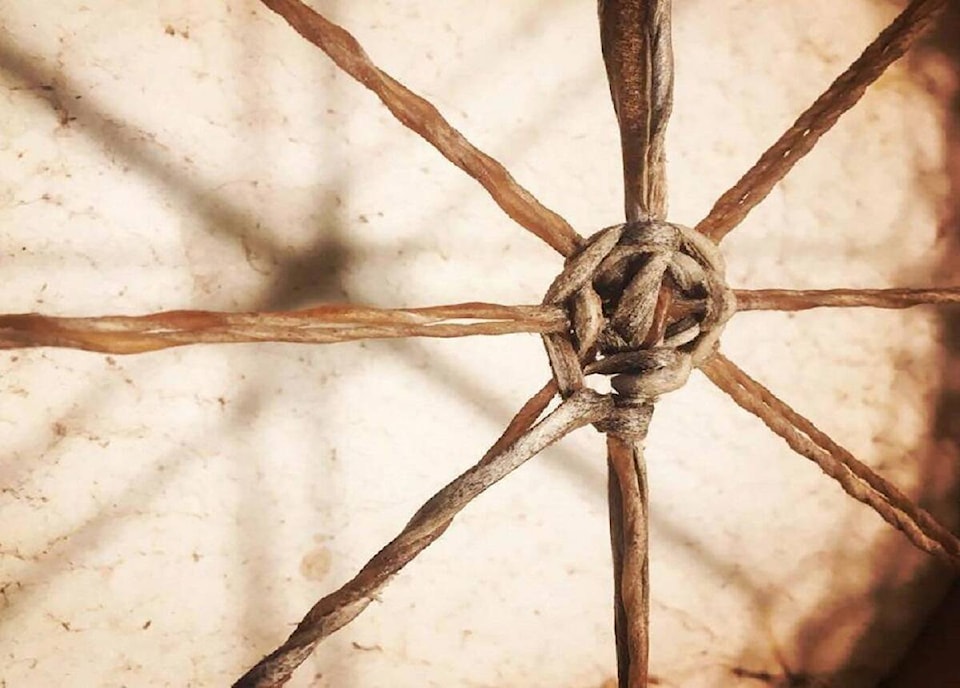Lately I’ve been digging into the past, trying to find out if women ever played the drum in our Dene communities prior to colonial contact.
There is not much written on the subject and so far my Google search has turned up with nothing since much of our records are not documented in books, only in oral histories, so naturally I turned to the community for answers.

My Tlicho musician friend recently told me over coffee when asked his view on the subject, that the adoption of the bicycle wheel was sometimes used as the rim of the drum as it was already in the shape of a perfect circle, and I thought that was pretty clever and innovative. This evolution may have changed the sizing of the original drum over time as it is believed that the drum was much larger before contact. My friend also enlightened me about a Scottish doctor by the name of John Rae, whom the community of Fort Rae was named after and it has since been renamed its original name Behchoko, but that’s a story for another time.
The symbolism and significance of the Dene drum is profound. The beating of the drum represents a beating heart. Some say that the reason women are not allowed to drum here in the NWT is because they are too powerful. I agree with the notion that we are powerful, but I couldn’t stop at that and needed to investigate further. However, I dare say that the drum truly is a source of energy all on its own – the drum representing life itself is a powerful tool in a woman’s hands because we are the life givers.
From start to finish, a traditional Dene drum is handmade by using the skin of a freshly-scraped caribou hide stretched over a bent birch frame and tied with caribou sinew. The heated drum can be the source of feet stomping in a circle at a drum dance (not a tea dance as there is no drum at a tea dance) the prelude to a soft prayer, or the overwhelming boom at a hand games tournament. Whichever way it is used, the drum has a place in all aspects of Dene society.
My mom and I are headed to Whati to watch the big handgames tournament this weekend and I am excited to hear the steady sound of the drums in the loud, action packed tournament of what is essentially a hide and seek game among teams of men adorned in handmade beaded vests. How fun it would be to try my hand at this game, but I am a bystander like every other woman watching the fast-paced games and I have been told this is how it has always been but our neighbors to the West in Yukon beg to differ.
The president of the 14 Nations Handgames Society says that women have always played handgames. The first handgames tournament where women were invited to play in recent times was in 2016, and maybe this shift will even go so far as becoming completely gender neutral someday as the president Doronn Fox explains: “Women were the keepers of the drum. Women were the keepers of the ceremony, the dance, the singing,” he said. “The women gave the men all these teachings… to help the men in those hard times, (so) that one day men would have to give it back to the women.”
He has a point. Has that time come? When I turn my focus to the Cree to the south of us, women like Kookum Carol Powder is actively doing just that, teaching her grandson Chubby Cree (Noah Green) to be the best drummer around. Is she bringing back this lost art?
When Christian missionaries came to our Northern communities, they banned the playing of the drum altogether so who’s to say they didn’t sway the minds to say that women should not be allowed to play. After all, they even went as far as separating male and female in the church pews and in residential schools.
Then there is the imposition of the Indian Act, which dispossessed Indigenous women from their home communities through marriage, which directly plays into the Missing and Murdered Indigenous Women and Girls (MMIWG) inquiry. Since the Indian Act permits the disrespect of women and perpetuates violence towards them, who’s to say it didn’t completely eradicate the last traces of women playing the drums? After all, in Dene communities pre-colonization, I have been told that women were the leaders and guess what – most of today’s Dene leaders play the drums.
Still, there are no agreed upon facts when it comes to the historical relevance of the drum in a women’s hand. With the interference of colonization, it has made it difficult to recall that long ago, and because of that my question remains unanswered. I’ve accepted the fact that I might never know. If only I could travel into the past. Would I see my early ancestor Ethiba (mother of Francois Beaulieu) singing and playing the drum?
One thing is for certain, gender dynamics are slowly shifting and being challenged within Dene drumming culture when it comes to playing the traditional drum. I guess only time will tell if things are going back to the way they might have been long ago, if they will stay the same or if they are moving in a new direction.
